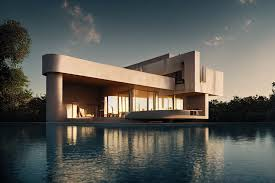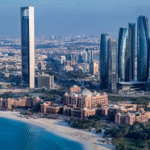Now Reading: Luxury Real Estate in Dubai: Trends and Buyer Preferences in 2025
-
01
Luxury Real Estate in Dubai: Trends and Buyer Preferences in 2025
Luxury Real Estate in Dubai: Trends and Buyer Preferences in 2025

Table of Contents
Dubai’s luxury real estate market in 2025 is thriving, driven by robust economic growth, investor-friendly policies, and a global reputation for opulence and innovation. With a projected 5–10% annual price increase and rental yields of 6–9%, the market is attracting high-net-worth individuals (HNWIs), expatriates, and international investors, particularly through initiatives like the Golden Visa Program. Below is a comprehensive analysis of the key trends and buyer preferences shaping Dubai’s luxury real estate market in 2025, with insights into the factors fueling demand and investment opportunities, particularly in the context of the rental market dynamics and taxation considerations discussed previously.
Key Trends in Dubai’s Luxury Real Estate Market (2025)
- Sustained Price and Rental Growth:
- Property Prices: Luxury property prices are expected to rise by 5–10% in 2025, with prime areas like Palm Jumeirah, Downtown Dubai, and Dubai Hills Estate seeing spikes up to 10–12%. For example, Palm Jumeirah recorded a 200% year-on-year rental price surge in 2024, and this momentum continues into 2025.
- Rental Yields: Luxury rentals offer yields of 6–9%, with short-term rentals (e.g., Airbnb) surging by 18% and long-term leases by 13%. High-demand areas like Dubai Marina (average rent AED 139,000/year) and Downtown Dubai (AED 231,000/year) are prime examples.
- Ultra-Luxury Segment: Sales of properties valued over AED 15 million reached 948 in 2024, with $10 million-plus homes doubling to AED 7.6 billion in 2023, outpacing global markets like London and New York. The super-prime market ($25 million-plus) saw 56 deals worth $2.3 billion in 2024.
- Surge in Branded Residences:
- Dubai leads globally with nearly 140 branded residence projects, including developments like Mira Villas by Bentley Home and Trussardi Residences. These properties, offering high-end amenities and iconic architecture, cater to HNWIs seeking exclusivity and prestige.
- Buyer Appeal: Branded residences in areas like Palm Jumeirah and Dubai Marina attract buyers for their luxury lifestyle, with features like private cinemas, spas, and concierge services.
- Sustainability and Smart Technology:
- Eco-Friendly Developments: Sustainability is a key driver, with 35% of real estate sales projected to be green-certified by 2025, up from 15% in 2020. Projects like Dubai Sustainable City incorporate solar panels, greywater recycling, and energy-efficient designs, reducing water and electricity use by up to 20%.
- Smart Homes: Buyers demand IoT-enabled homes with AI-powered security, smart lighting, and energy management systems. Developments like Emaar The Oasis and DAMAC Lagoons integrate these technologies, aligning with Dubai’s Net-Zero 2050 commitment.
- Tax Incentives: As noted in the UAE’s 2025 corporate tax reforms, businesses investing in R&D for sustainable technologies can claim 30–50% tax credits (effective 2026), encouraging developers to prioritize eco-conscious projects.
- Off-Plan Dominance:
- Off-plan properties account for over 60% of sales, driven by flexible payment plans and high capital appreciation (e.g., 84% ROI in Dubai Marina). Major projects like DAMAC Bay 1 by Cavalli, Emaar The Oasis, and Damac Island attract global investors.
- New Supply: Approximately 41,000 new units are expected in 2025, with 76,000 total completions by year-end, easing supply constraints but maintaining price growth in luxury segments due to limited inventory.
- Increased Foreign Investment:
- Dubai’s investor-friendly policies, including no property tax, no capital gains tax, and the Golden Visa Program (AED 2 million investment threshold), attract HNWIs from India, the UK, China, Russia, and the Americas. Over 58% of Q1 2025 transactions involved international buyers.
- Geopolitical Drivers: The Russia-Ukraine conflict has driven Russian investors to luxury areas like Palm Jumeirah, boosting demand for high-end villas and apartments.
- Golden Visa Impact: The program fuels demand for properties priced at AED 2 million or more, with 110 new Golden Visa-eligible listings in May 2025, particularly in luxury hotspots.
- PropTech and Market Transparency:
- Technology Integration: Blockchain for seamless transactions, AI-driven property management, and platforms like Bayut and Property Finder enhance buyer experiences and transparency. The Dubai Land Department’s Smart Rental Index, launched in January 2025, uses AI to provide transparent rental valuations, benefiting luxury landlords and tenants.
- Impact on Buyers: Digital tools, including virtual tours and real-time market data, empower buyers to make informed decisions, especially for off-plan investments.
- Short-Term Rental Boom:
- An 18% increase in short-term rental demand, driven by Dubai’s tourism surge (18.7 million overnight visitors in 2024, up 9% from 2023), boosts luxury rental yields. Areas like Jumeirah Lakes Towers (JLT) and Business Bay see high demand for serviced apartments.
- VAT Implications: As outlined in the VAT overview, short-term rentals (e.g., Airbnb) are subject to 5% VAT, requiring landlords to register if annual supplies exceed AED 375,000, impacting pricing strategies.
Buyer Preferences in Dubai’s Luxury Real Estate (2025)

- Prime Locations:
- Top Areas: Buyers prioritize Palm Jumeirah (average sales price AED 7.48 million, 36% ROI), Downtown Dubai (AED 4.36 million), Dubai Hills Estate (AED 17.77 million, 41% ROI), and Dubai Marina (AED 2.52 million, 84% ROI). These areas offer waterfront views, proximity to landmarks like Burj Khalifa, and high-end amenities.
- Emerging Hotspots: Dubai Creek Harbour, Emaar Beachfront, and The Oasis attract buyers for their modern designs and strategic locations.
- Golden Visa Appeal: Properties meeting the AED 2 million threshold for Golden Visa eligibility are highly sought after, particularly in Palm Jumeirah and Dubai Hills Estate.
- Luxury Amenities and Lifestyle:
- Key Features: Buyers demand private pools, expansive skyline views, private cinemas, spas, and concierge services. Branded residences with affiliations like Bentley or Trussardi are particularly popular.
- Community Appeal: Lifestyle-oriented communities with vibrant amenities (e.g., golf courses in Dubai Hills Estate, yacht marinas in Emaar Beachfront) are preferred by families and HNWIs.
- Tax Considerations: The absence of property and capital gains taxes, combined with VAT exemptions on residential sales and leases, enhances affordability for luxury buyers, as noted in the VAT overview.
- Sustainability and Technology:
- Eco-Conscious Preferences: Buyers increasingly seek LEED-certified properties with energy-efficient systems, solar panels, and water recycling, aligning with Dubai’s 2040 Urban Master Plan.
- Smart Home Features: IoT-enabled automation, AI security systems, and energy management are non-negotiable for tech-savvy buyers, especially in developments like DAMAC Lagoons.
- Tax Incentives: R&D tax credits for sustainable technologies (30–50%, effective 2026) encourage developers to meet these preferences, reducing costs for eco-friendly projects.
- Flexible Payment Plans and Off-Plan Investments:
- Off-Plan Appeal: Buyers favor off-plan properties for lower entry costs and high ROI potential. Flexible payment plans (e.g., 1% monthly installments) make luxury projects like Emaar The Oasis accessible.
- Golden Visa Strategy: Investors target off-plan properties meeting the AED 2 million Golden Visa threshold, leveraging flexible financing to secure residency.
- Expatriate and International Buyer Focus:
- Demographics: Over 58% of buyers are international, with strong demand from India, the UK, China, and Russia. Expatriates, drawn by Dubai’s business hub status and digital nomad appeal, prefer short-term luxury rentals.
- Visa Reforms: The Golden Visa Program drives purchases of high-value properties, with buyers prioritizing areas with high rental yields to offset investment costs.
- Tax Implications: Freelancers and sole proprietors in real estate consultancy must register for corporate tax (9% on income above AED 375,000) and VAT (5% on services) if turnover exceeds AED 1 million or AED 375,000, respectively, impacting pricing for services like Golden Visa property advice.
- Short-Term Rental Preferences:
- Demand Surge: HNWIs and expatriates seek furnished, short-term luxury rentals in areas like JLT and Business Bay for flexibility. Properties with high-end finishes and smart home features command premium rates.
- VAT Compliance: As noted in the VAT overview, short-term rentals are subject to 5% VAT, requiring landlords to ensure compliance via eInvoicing (proposed for 2025) to avoid penalties.
Implications for Buyers and Investors

- Investment Opportunities:
- High ROI: Luxury properties in prime areas offer 6–9% rental yields and 5–10% capital appreciation, outpacing global markets like New York (4.2%) and London (2.4%).
- Golden Visa Benefits: Properties priced at AED 2 million or more secure 10-year residency, attracting HNWIs and boosting demand for villas and branded residences.
- Tax Advantages: No property or capital gains taxes, combined with VAT exemptions on residential sales and leases, enhance returns. However, commercial properties and services face 5% VAT, requiring strategic financial planning.
- Challenges:
- Supply Constraints: Low vacancy rates (below 10% in prime areas) and limited luxury inventory drive price increases, making early investment critical.
- Compliance Costs: Developers and real estate professionals face increased costs from VAT, corporate tax (9% above AED 375,000), and proposed eInvoicing, as outlined in prior tax discussions.
- Global Risks: Rising interest rates (5.25–5.75%) and supply chain disruptions may increase borrowing and construction costs, impacting affordability.
- Market Resilience:
- Dubai’s 6.2% GDP growth forecast for 2025, driven by real estate and tourism, ensures market stability. The 2040 Urban Master Plan and Expo 2020 legacy projects further enhance infrastructure, supporting luxury demand.
Key Trends
- Price Growth: Luxury property prices to rise 5–10%, with prime areas (Palm Jumeirah, Downtown Dubai) up 10–12%. Ultra-luxury ($10M+) sales doubled to AED 7.6 billion in 2023.
- Rental Yields: 6–9% yields, with 18% short-term and 13% long-term rental increases. Dubai Marina (AED 139,000/year) and Downtown Dubai (AED 231,000/year) lead.
- Branded Residences: Nearly 140 projects (e.g., Mira Villas by Bentley) attract HNWIs with exclusive amenities.
- Sustainability: 35% of sales green-certified by 2025, with LEED projects like Dubai Sustainable City using solar panels and water recycling.
- Smart Technology: IoT, AI security, and blockchain integration in projects like Emaar The Oasis meet buyer demand.
- Off-Plan Dominance: Over 60% of sales, with 41,000 new units in 2025. Projects like DAMAC Bay 1 offer high ROI (e.g., 84% in Dubai Marina).
- Foreign Investment: 58% of Q1 2025 transactions by international buyers, driven by Golden Visa and tax-free policies.
- Short-Term Rentals: 18% demand surge in JLT, Business Bay, fueled by 18.7 million tourists in 2024.
Buyer Preferences
- Prime Locations: Palm Jumeirah (AED 7.48M, 36% ROI), Downtown Dubai (AED 4.36M), Dubai Hills Estate (AED 17.77M, 41% ROI), and Dubai Marina (AED 2.52M, 84% ROI).
- Luxury Amenities: Private pools, cinemas, spas, and concierge services in branded residences.
- Sustainability/Technology: LEED-certified properties with IoT, AI security, and energy management systems.
- Off-Plan Investments: Flexible payment plans for Golden Visa-eligible properties (AED 2M+).
- Expatriate Appeal: Short-term furnished rentals for digital nomads and professionals in JLT, Business Bay.
- Tax Considerations: No property/capital gains taxes; 5% VAT on commercial properties and services.
Investment Outlook
- Opportunities: High ROI (6–9%), Golden Visa-driven demand, and tax-free benefits attract HNWIs.
- Challenges: Supply constraints (vacancy <10%), rising interest rates (5.25–5.75%), and VAT/corporate tax compliance costs.
- Market Resilience: 6.2% GDP growth, 2040 Urban Master Plan, and tourism surge ensure stability.
Recommendations
- Invest Early: Target off-plan properties in prime areas for maximum ROI.
- Prioritize Sustainability: Choose green-certified projects to align with buyer trends and tax incentives.
- Leverage PropTech: Use platforms like Bayut for market insights and transparent transactions.
- Ensure Compliance: Register for VAT (if supplies > AED 375,000) and corporate tax (if income > AED 375,000) to avoid penalties.
- Consult Experts: Engage firms like Knight Frank or Emaar for Golden Visa-eligible property guidance.
Conclusion
Dubai’s luxury real estate market in 2025 is a global leader, driven by 5–10% price growth, 6–9% rental yields, and demand from HNWIs and expatriates. Buyer preferences for branded residences, sustainable designs, smart technology, and Golden Visa-eligible properties shape the market, with prime areas like Palm Jumeirah and Dubai Marina leading. Tax advantages (no property/capital gains taxes, VAT exemptions on residential properties) and PropTech innovations enhance appeal, though compliance with VAT and corporate tax is critical for professionals. Investors should target off-plan projects and sustainable developments to maximize returns, leveraging resources like the Dubai Land Department (www.dubailand.gov.ae) and firms like Emaar or DAMAC for guidance.
WATCH MORE: https://www.youtube.com/watch?v=NNVsC-z227U
READ MORE: Abu Dhabi Property Market Outlook 2025: Growth Drivers and Investment Hotspots






















